Finally, an EFFECTIVE non-opioid, non-invasive way to treat Chronic Pain
Scrambler Therapy's 80%-90% effectiveness in treating chronic neuropathic and oncologic pain gives you an unparalleled ability to care for your patients
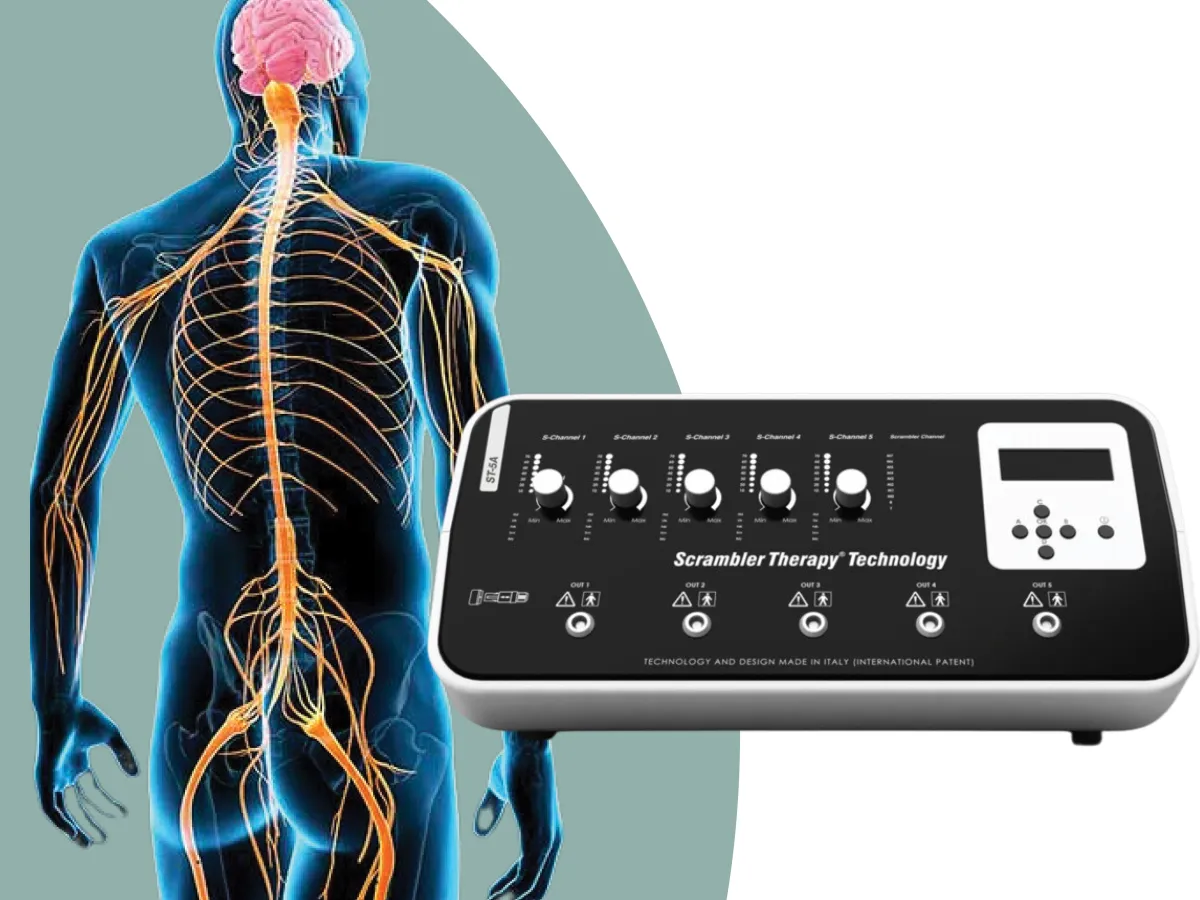
Introducing Cutting-Edge Advancement in Chronic Pain Relief: Scrambler Therapy® Technology
Scrambler Therapy® ST-5A Technology is a revolutionary electroanalgesia device
Uses a biophysical (instead of biochemical) approach to treat chronic pain.
Transmits a “no pain” message to the surface receptors via disposable electrodes
Remodels the pain system to convey a message of “no pain” to the central nervous system.
As Seen in:

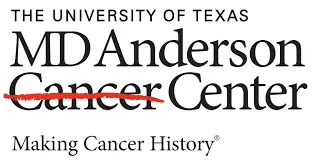

"80-90% of patients have a favorable response," states
The New England Journal of Medicine, July 2023
Scrambler Therapy® Technology Effective Chronic Pain Relief
Gives Hope to Patients with No Adverse Side Effects.
Discover a Wide Variety of Indications for Use
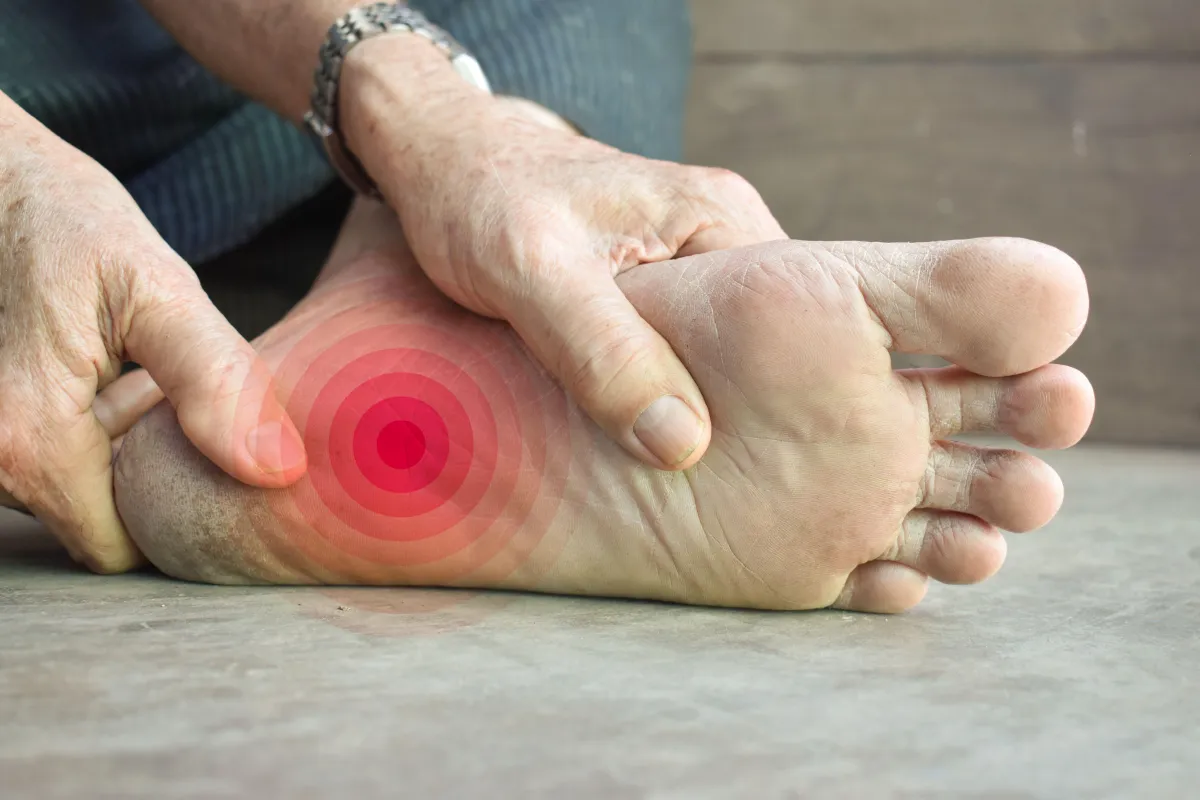
*Note: Scrambler Therapy is effective in treating most types of neuropathic and oncologic pain. Diagnosis listed to the right are some examples that Scrambler Therapy can treat. Book a call to explore diagnosis not listed.
Indications for Use
Chronic neuropathic pain
Chronic opioid-resistant pain
Chronic oncologic pain
Diagnosis Able to Treat:*
Complex Regional Pain Syndrome (CRPS)
Pancreas and abdominal cancer pain
Post-herpetic pain (shingles pain)
Bone metastases
Spinal cord stenosis
Post-mastectomy pain
Chemotherapy-induced Peripheral Neuropathy (CIPN)
Chronic Cancer Pain
Chronic Neuropathic Pain
Failed Back Surgery Syndrome (FBSS)
Sciatic and Lumbar Pain
Post herpetic Neuralgia (PHN)
Brachial Plexus Neuropathy
Low Back Pain (LBP)
Chronic Neuropathic Pain Opioid Addiction
Endometriosis
Understand the Treatment Behind Our
Solution for Chronic Pain
Employs 5 artificial neurons connected to electrodes to treat multiple pain areas simultaneously
By overriding the pain signal with a “no pain” signal to the brain, it scrambles (recodes) the neurons, reducing the patient’s pain level to zero regardless of the initial pain intensity and type
The treatment protocol typically includes 10 consecutive sessions over two weeks
Each session is ~45 minutes each
Booster sessions are provided as needed
Use is restricted to physicians (MD/DO) or to other qualified health care professionals under the direct supervision of a physician
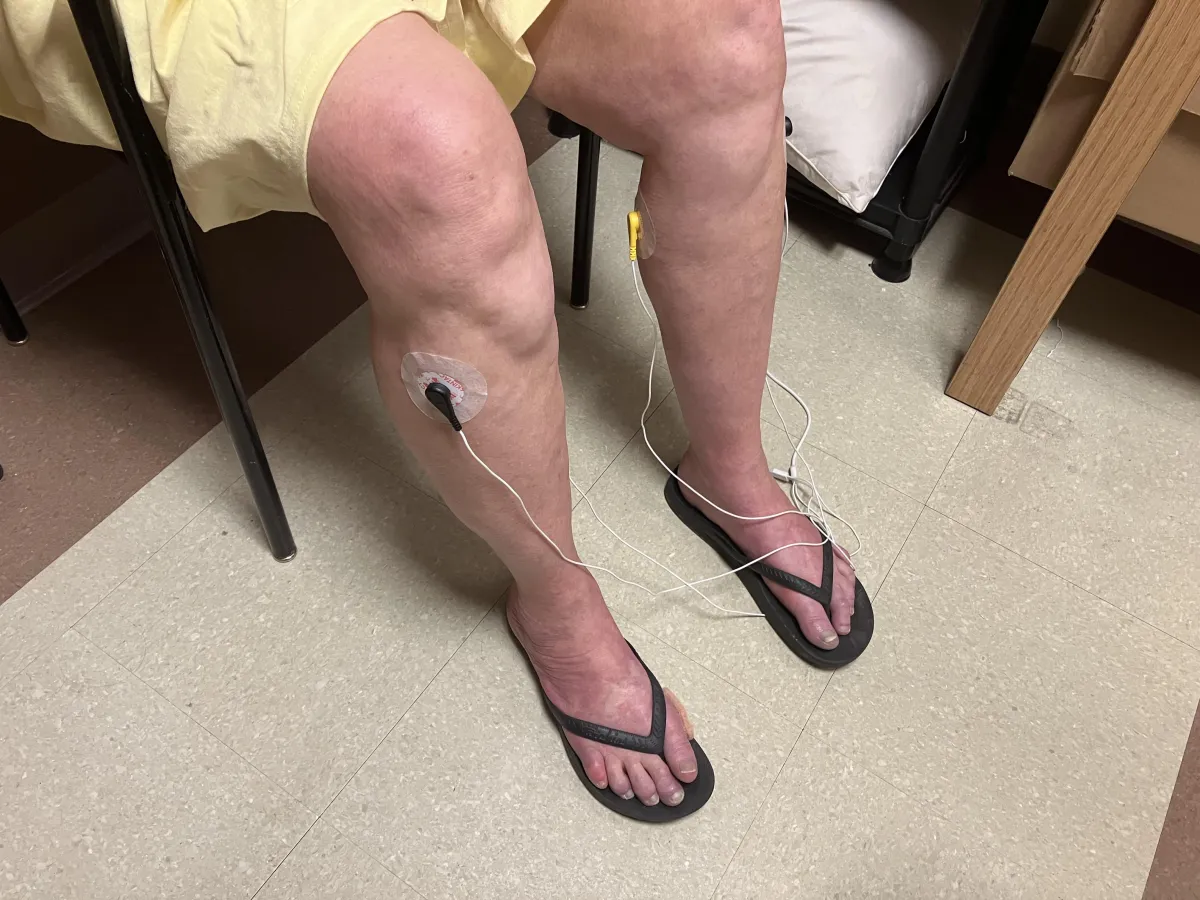
Insights from Medical Experts
Hear What Doctors Have to Say About Our Exceptional Medical Device

"It's effective, it's non-invasive, it reduces opioid use
substantially and it can be PERMANENT."
- Thomas Smith, M.D., professor of oncology and medicine at the
Johns Hopkins University School of Medicine
Listen to Dr Salahadin Abdi, MD, head of pain management at MD Anderson Cancer Center who led some of the clinical trial locations share his insight:
For more clinical information, please visit:
Your Patients Will Love Scrambler Therapy Too!
"For over 22 years, right hip pain plagued me due to Osteoarthritis. Medications like Norco® and a Fentanyl Patch left me sluggish and drugged. When the pain spread to my back and hands, meds weren't an option anymore. My doctor mentioned Scrambler Therapy®. After 6 months of waiting, I tried it. To my disbelief, the first treatment relieved my pain. My fingers went from claw like to functional, and life became manageable again. I restore antiques using my hands daily, and Scrambler Therapy® changed everything. Boosters make me feel even better. It's like a miracle—I've regained "ME." I cycle, ski, and live fully."
Gloria B. / Sandy, OR
"After my second session of Scrambler Therapy, I was at home and got up from a chair and got halfway across a room before I realized what I was doing. I Didn’t have any pain. I Didn’t struggle. I Didn’t grab my cane. I Didn’t think that was ever going to be possible again in my life.”
Tom / Portland, OR
"My chronic pain was so intense I lost my will to live. Over 30 doctors tried to alleviate the pain, but they could only provide slight, temporary relief. Over a two year timespan I went to over 350 medical visits, and had so many tests, injections, and nerve blocks I lost count. Then I learned of Scrambler Therapy. It sounded too good to be true given all the disappointments - I didn't believe there could be anything that could help. After 3 treatments I could walk normally again. By the end of the 10th treatment my pain was gone. Scrambler Therapy treatments, quite literally, saved my life."
Connor C. / McKinney, TX
“Had no hope of getting relief from the diabetic neuropathy in my feet. Now the pain,
burning and sensitivity is gone. Amazing.”
Bill / Portland, OR
"I felt so hopeless and helpless with my daughters chronic pain that was leaving her debilitated. Every option seemed worse than the next…surgery…possible addiction…drugs that would reduce her ability to live her life normally. We refused them all and we’re determined to grind it out with PT in hopes the pain would subside. We heard about scrambler therapy around 8 months into her ordeal. I was all for it…she was not. She was understandably afraid of it making her worse and also of me having paid the cost of it and it not working. Finally she agreed to at least give it a try. At first it really didn’t seem to be her answer. She experienced some relief, but it was minimal and short lived. We were encouraged by the stories of others success however so we decided to stick it out a while longer. On day nine while on the machine my daughter looked up and said that her pain was a “zero”. We got in the car to go home…both emotional. She looked me in the eye and said “it’s gone”. Chills ran down my spine. “What do you mean” I asked. “I mean it’s gone Mom. It’s not coming back.” She was right; it was gone and it has not come back. Scrambler therapy was nothing short of a miracle treatment for my daughter. There isn’t a day that goes by that I am not grateful for her having her life back pain free."
Connor C. / McKinney, TX
U.S. Locations
There are over 80 locations using Scrambler Therapy across the US today including:
16 Military and VA Hospitals
Research Hospitals: Mayo Clinic, Johns, Hopkins, MD Anderson, Cleveland Clinic, UCLA
Numerous Private Practices
(click on the map to open a Google Map)
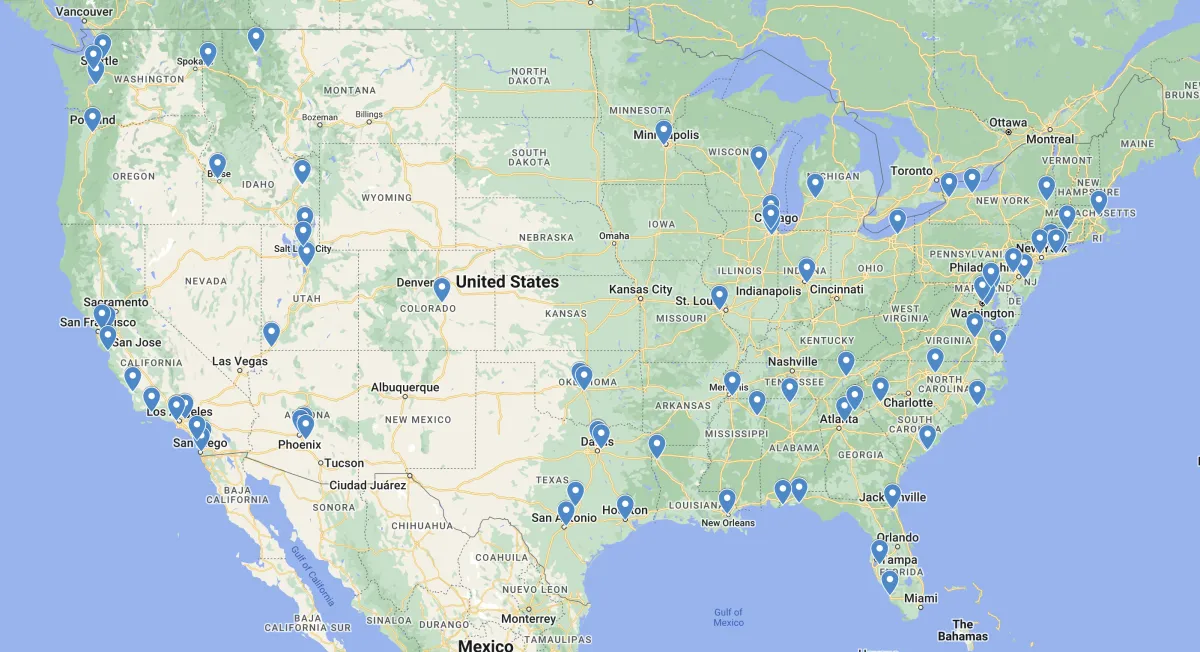
EXCLUSIVE CONVENIENT TRAINING
IN YOUR OFFICE
FOR YOUR CONVENIENCE, WE OFFER 3 DIFFERENT OPTIONS FOR TRAINING:
"On-site" in your office - WE CATER TO YOU
BOISE, IDAHO
ROME, ITALY
Training is conducted over a 3-day period, ensuring each provider is given a wide variety of patients and diagnosis to treat. Both the science and the "art" of electrode placement and device functionality is covered in detail.
MAKE A PROFIT WITHIN THE FIRST 2 WEEKS!
Scrambler Therapy adds a new, billable procedure to your office with it's own CPT code. Our "Placement Agreement" structure offers a one-time, upfront cost of $4,999 for Training and Setup and a per-treatment fee, allows for your office to be profitable within weeks or months of starting treatments. Couple the Placement Agreement with the On-Site Training and you'll realize a profit Blog Postsafter the first 2 week!

You Never Think Overcoming Cancer Means Living In Pain. We're Offering New Hope.
Cancer is a battle no one prepares for, let alone thinking about the aftermath. If you think the diagnosis and treatment can shatter your world, there are no words for the overlooked impact post-cancer pain can have. The relentless agony lingers long after treatment and can make everyday tasks feel impossible, denying you peace and joy. The thought of finding real relief and getting back to your old life can feel hopeless. But we're here to provide a new solution that fills the gap where traditional pain relief methods fall short.
Understanding Post-Cancer Pain or Chemotherapy Induced Peripheral Neuropathy
When you finish cancer treatment, the expectation is to finally find peace and healing. But for many, the end of chemotherapy marks the beginning of a new struggle: debilitating pain. Chemotherapy-induced peripheral neuropathy (CIPN) unfortunately affects 30% to 70% of those who undergo certain chemotherapeutic treatments, making it a common side effect.
Chemotherapy drugs are designed to kill rapidly dividing cells (a telltale sign of cancer). Unfortunately, there isn't a way for the chemo to isolate just the cancerous cells, so they can affect other rapidly dividing cells, including healthy cells in your nervous system. When the healthy nerve cells are damaged, they malfunction, sending pain signals even when there is no injury.
Nerve damage causes intense and debilitating pain, numbness, and tingling, especially in your hands and feet. The malfunctioning signals to your brain make every touch and movement a never-ending agony. Simple daily tasks become painful challenges, and the people around you often don't fully understand just how much pain you’re in.
You feel like you should have been back to your everyday life by now, especially seeing the cancer is gone. While you might feel alone right now, or like you’ve tried everything, we want you to know you're not. We know what you’re going through, and helping get you back to your pain-free self is the mission and vision of Scrambler Therapy®. We're here to help.
Chemotherapy Drugs Linked to CIPN
Several chemotherapy drugs are known to contribute to chemotherapy-induced peripheral neuropathy (CIPN). These include:
Abraxane (nanoparticle albumin bound-paclitaxel)
Bortezomib (Velcade)
Carboplatin (Paraplatin)
Cabazitaxel (Jevtana)
Carfilzomib (Kyprolis)
Cisplatin (Platinol)
Docetaxel (Taxotere)
Eribulin (Halaven)
Etoposide (VP-16)
Ixabepilone (Ixempra)
Lenalidomide (Revlimid)
Oxaliplatin (Eloxatin)
Paclitaxel (Taxol)
Pomalidomide (Pomalyst)
Vinblastine (Velban)
Vincristine (Oncovin, Vincasar PFS)
Vinorelbine (Navelbine)
While in most cases CIPN will be a side effect of the cancer treatment, it can also be caused by the cancer itself when a tumor puts added pressure on a peripheral nerve. It can also be caused by radiation therapy.
The Impact of Chronic Pain on Cancer Survivors
When you're struggling with constant and debilitating pain, you try everything possible to find relief from the aches, throbs, tingling, and burning. From the moment you wake up to the moment you shut your eyes at night, you wish the pain would just stop.
Socially, chronic pain changes your relationships. Not only can it be impossible to put your pain into words, but the lack of understanding from friends and family can strain even the closest bonds. The need to cancel plans or limit activities can make you feel like a burden, isolating you from your support network.
The emotional toll of chronic pain is enormous. The frustration of not being able to do what you once could, combined with the isolation of feeling misunderstood by those around you, can lead to depression and anxiety. It can feel like no one can truly grasp what it's like to try and live in your body.
Financially, the agonizing pain can leave you and your family in a dangerous place, just scraping by. Continuous appointments and endless medications quickly add up. The inability to work or maintain a steady income due to chronic pain worsens the financial stress. It can be so difficult to cover daily expenses and medical bills, not to mention any insurance you once had is likely now at an all-time high (and not about to decrease anytime soon). This financial strain can lead to difficult decisions about your care and quality of life. It can leave you in a survival mode, desperate and hopeless to get out from beneath stacks of medical debts.
The physical impact of chronic pain extends beyond the pain itself. It can disrupt your sleep, leaving you exhausted and affecting your ability to function throughout the day. Lack of sleep can aggravate pain, creating a vicious cycle that is hard to break. Your body's constant state of stress from dealing with pain can also weaken your immune system, making you more susceptible to other illnesses.
You expected life to improve after beating cancer, but chronic pain has created new barriers that rob you of your quality of life. We understand this struggle and are here to help you reclaim your life. You don't need to live this way anymore.
Why Most Pain Management Methods Aren’t Effective for CIPN
For those battling chemotherapy-induced peripheral neuropathy (CIPN), finding effective pain relief can be a horribly frustrating and disheartening process.
Medications are very commonly prescribed but act as band-aids rather than real solutions that get to the root of the problem. Opioids, in particular, are a go-to for many doctors despite their well-documented downsides. While they may temporarily relieve the pain, they do not address the damaged nerves sending the pain signals. Worse, they bring a host of side effects like dizziness, nausea, and constipation. The risk of addiction is ever-present, too. The opioid epidemic has already devastated countless lives. You've survived cancer, which tried to strip you of your life; you don't need to face a life-threatening prescription addiction while trying to get back to the old you.
Surgery is another traditional pain relief method many consider. Unfortunately, the reality of surgery can offer results far from the promise of pain-free living. The procedures come with long waiting lists and, at times, even longer recovery periods. There is the risk that something unexpected might go wrong during the surgery, but even if it doesn't, it is still incredibly financially draining. Then, there's always the risk that the surgery won't deliver the hoped-for results. You might endure the waiting, pain, and expense and have your hopes dashed when you wake up from surgery to find that the pain persists or is even worse after the operation.
Living with pain post-cancer means weighing out what treatments are worth exploring and often finding out the hard way that some shouldn't have been considered. All too often, the pros and cons of your options aren't clearly mapped out for you. We want to change that and give you an option that doesn't break the bank and doesn't mean you're at risk of even more side effects. Especially seeing you’re already trying to treat a side effect. You deserve something effective, risk-free and genuine in its ability to get you back to the life you love.
Scrambler Therapy® as a Pain Relief Solution
Developed by Neuroscientist Giuseppe Marineo in Italy, Scrambler Therapy® offers an all new approach to managing chronic pain. It is particularly effective for nerve damage conditions, like CIPN. The current ST-5A model uses noninvasive technology to adjust how the body interprets pain signals. It eliminates the need for prescription drugs or invasive surgery and their associated risks and side effects.
Scrambler Therapy® uses electrodes placed on the skin to deliver signals that mimic our body's normal nerve impulses. This process effectively retrains the brain to recognize and process these signals so you don't feel pain. It's incredibly effective and long-lasting, thanks to the power of neuroplasticity, which is the brain's ability to reorganize itself by forming new neural pathways in response to new information or stimulation. A standard course of treatment includes ten sessions spread out over two weeks. Each session lasts approximately 30 to 60 minutes, and you can start to feel pain relief after the first session!
The New England Journal of Medicine has even discussed the high effectiveness rate (80-90%) in alleviating pain, highlighting its reliability as a treatment option. Its accessibility, cost-effectiveness, and rapid pain-reduction capabilities have made it the dream solution patients have been searching for.
Have more questions? Check out our FAQ for more details!
Accessing Scrambler Therapy®
Taking action to find a certified provider in the US can truly change your life and bring you closer to pain relief. With over 80 certified providers across the country (and growing), finding one near you has never been easier. Click here to see our map!
Don't see any convenient locations? Just talk with your doctor about Scrambler Therapy® as a treatment option. Your healthcare provider can explore using the device directly in their practice.
We can tell you all you want to hear, but nothing will be more impactful than hearing the life changing stories of real people who have overcome their chronic pain. Join our Facebook group and find out what they have to say!
© 2024 Erickson Strong Medical - All Rights Reserved
